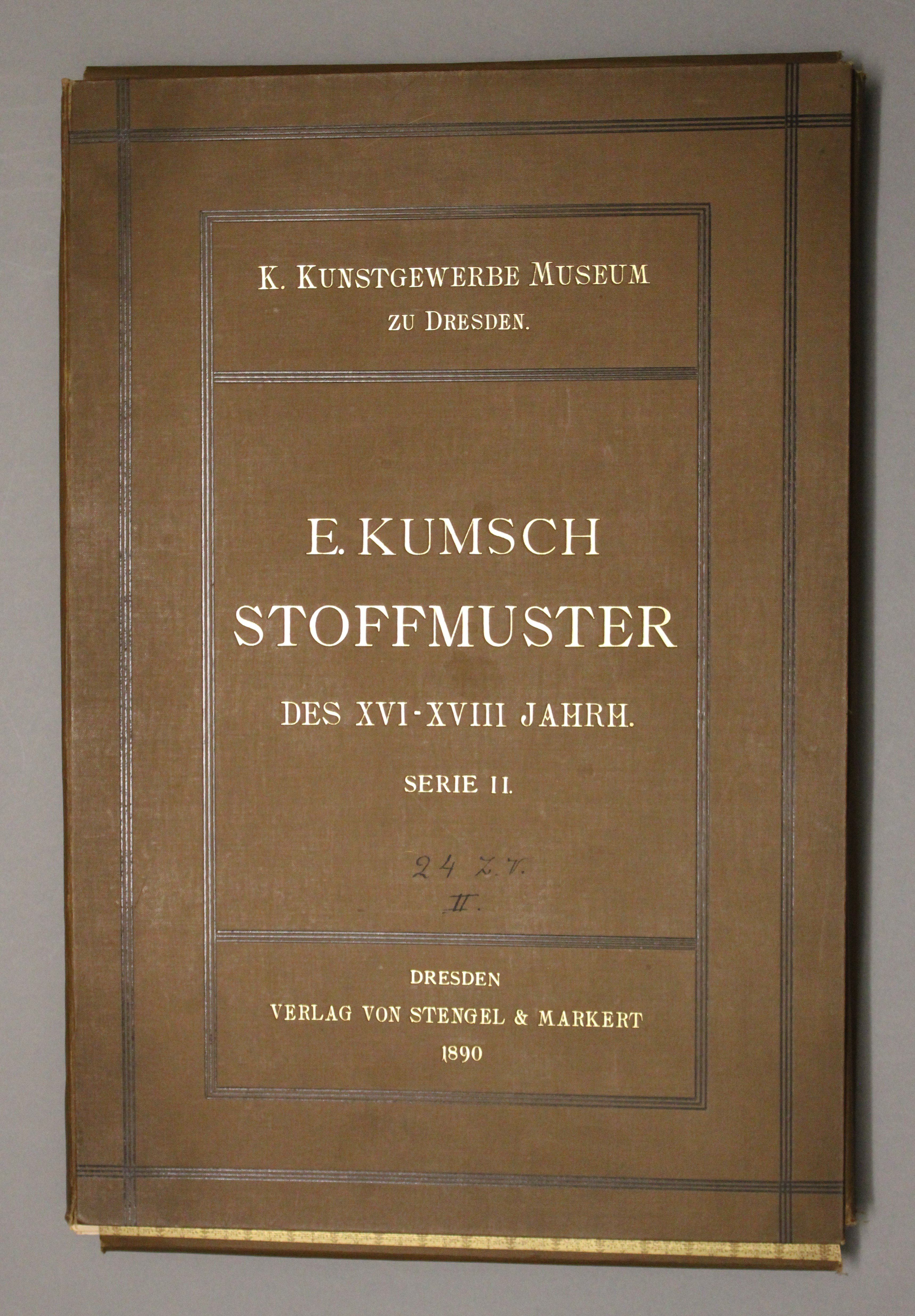Mappe trägt den Titel " Stoffmuster des XVI.-XVIII. Jahrhunderts; Königliche Kunstgewerbe-Museum zu Dresden" Autor und Herausgeber war der Bibliothekar Emil Kumsch. Serie 2 , 50 Tafeln (Tafel 51 bis 100) mit Fotodruck, Verleger: Verlag von Stengel und Markert, Kunstanstalt für Lichtdruck, Dresden 1890. Das Werk war ursprünglich im Besitz der Oberlausitzer Webschule Großschönau, Alte Nr. 24. Z.V II. , Blatt 37 (Tafel 86) enthält ein aufgenähtes original Stoffmuster. Deckblatt wohl falsch aus Serie 1.
de

